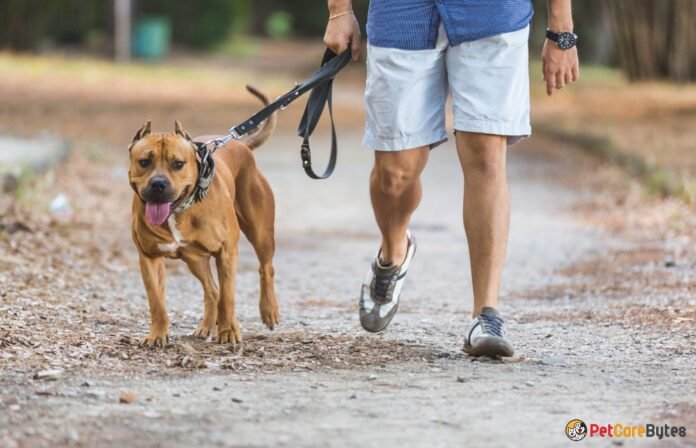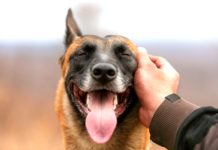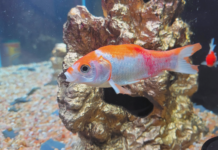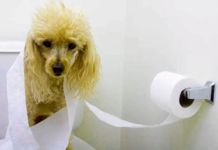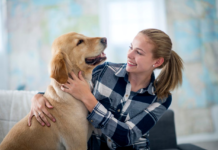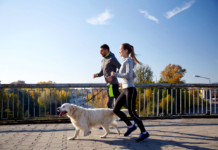Before you got a dog, you probably thought that walking one would be a great way to take long, relaxing walks, check out new neighborhoods, and hike trails. In your dreams, before you got a dog, your four-legged friend probably walked beside you on a leash, obeying your every command and looking at you with love.
After all, a dog needs to go for walks to stay healthy and happy. PetMD says that walks keep your dog flexible and can help with problems like constipation. Your dog won’t gain weight he doesn’t need to if you take him for walks often. Taking a dog for a walk can also help a lot to stop or reduce destructive behavior. When dogs don’t get enough exercise and get bored or have too much energy, they may dig holes in your yard or chew things like your shoes and couch cushions.
Walks with you help you and your dog gets to know each other better and give your dog a chance to meet and play with other people and dogs in a safe place. Having a well-socialized dog is very important. Socialized dogs are usually happier and friendlier than unsocialized dogs, which can be nervous and fearful around new people or animals.
And we haven’t even talked about how walking a dog affects your health. According to the New York Times, a study from Michigan State University found that 60 percent of dog owners who regularly walked their dogs met the federal guidelines for regular moderate or vigorous exercise, and almost half of dog walkers got an average of 30 minutes of exercise at least five days a week.
Dog Peeing while Walking
Why your dog does it: Dogs are protective of their territory, and urinating is a natural way for them to do this. It lets other dogs know that the dog has been there. Marking usually starts when kids hit puberty.
What to do: Talk to your vet first. You want to make sure that your dog’s stopping to pee every 10 feet isn’t because he needs to go to the bathroom or because he has a health problem like a bladder infection. If it’s because of his behavior, you can teach him not to mark as much, but it might be impossible to get him to stop doing it completely. Also, dogs who haven’t been spayed or neutered tend to mark their territory more than dogs who have.
Read More: The Science Behind Your Dog and His Behavior
Rolling in the Stink
Why your dog does it: Does your dog stop, drop, and roll when it sees a dead animal, garbage, or anything else that smells bad? Even though no one knows for sure why dogs do this disgusting thing, one theory is that they got it from wolves. They roll around in the smell and then take it back to their pack to find out more.
What to do: On walks, keep your dog on a leash (this is an important tip regardless of whether they like to roll in filth or not). Train them to understand the word “leave it,” and when they do, give them a treat. To keep your dog from getting hurt, don’t pull hard on the leash to get them away from the smelly thing.
Lying Down and Refusing to Move
Why your dog does it: They might be sick, hurt, or just tired.
What to do: Have your dog checked out. Do they have sore paws? Is it too hot to work with? Is it too hot? Give them a break and something to drink. If that doesn’t work and there are no obvious signs of injury, use treats to get your friend to come home. Before you start, think about your dog’s abilities and how much exercise he or she needs. A Labrador retriever will probably have very different walk expectations than an English bulldog. Don’t walk too fast. If you make your dog walk when he doesn’t want to, he could get hurt. If it keeps happening, you should talk to your vet to see if there is a bigger health problem you don’t know about.
Walking Back and Forth
Why your dog does it: A dog has a much better sense of smell than you do. You can’t smell as many interesting things from other animals and people as he can. He’s following scent trails when he zigs and zags in front of you, and he probably doesn’t even realize he’s tripping you.
What to do: Teach your dog to walk next to you and at your heel. You can teach your dog to walk nicely on a leash by giving it verbal cues and treats. But a dog loves to sniff, so it’s nice to let him do it when you’re both comfortable. Again, keeping the leash short and close will help stop the dog from doing this and hopefully keep you from tripping over it.

